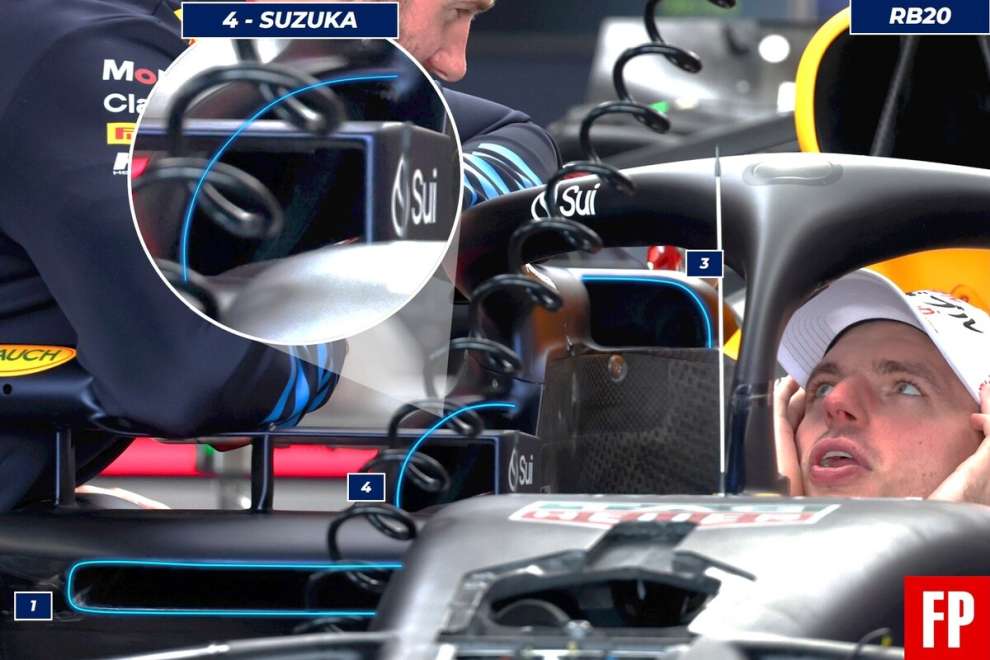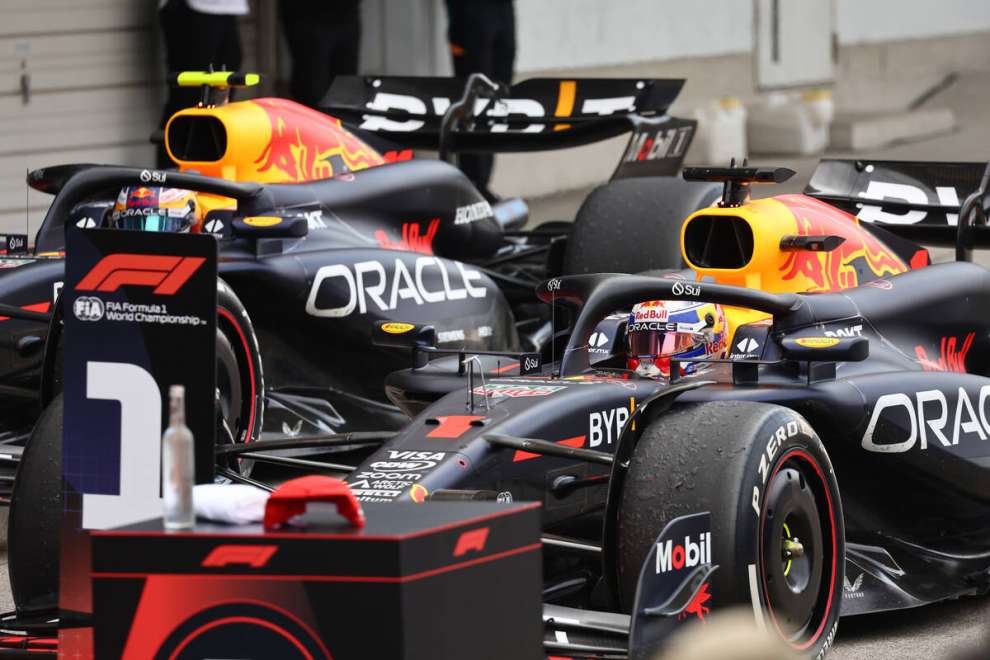By Carlo Platella
There couldn't have been a better weekend for the world champions, who return from Japan with the maximum amount of points, as well as important confirmations from the car. At Suzuka Red Bull introduced the first major package of updates, in an attempt to gain ground on the competition, which in turn will bring the first new features shortly. The Japanese circuit however did not allow us to fully appreciate the potential of the updated RB20whose latest progress will be evident on other types of tracks.
Balance intact
With the Japan package, Red Bull has slimmed down the horizontal cooling vents (1), compensated by the addition of two further intakes on the sides of the cockpit (4), drawing the air from a high pressure point. The changes to the bodywork are accompanied by those to the bottom, many of which are hidden under the car. From the outside you can appreciate the different fairing of the side impact structure and the addition of a small flow diverter along the edge of the bottom.
When asked about the quality of the package, Sergio Perez provided positive feedback: “It hasn't changed the characteristics much [dell’auto]. I think we just improved, we have a better car.” However, the Mexican reveals that the Japanese track is not the best for evaluating the effectiveness of the innovations: “It's probably difficult to observe the updates on this circuit, because they are designed more for other tracks. From my point of view, we have to wait a couple of races to really learn from this package.”

No front page load
Work on the Suzuka updates began even before the car was presented, which is why their development was likely guided by a similar philosophy to that of the initial project. Chief engineer Paul Monaghan has already explained how the 2024 Red Bull was born with an absolute downforce similar to that of 2023, without seeking an increase in the maximum peak. “Your goal is to make sure a platform to work with from a lap time perspectivenot necessarily for front-page load values”, the engineer's summary. The counter-proof is offered by Mercedes, which in Melbourne from 2023 to 2024 measured 70 points of more aerodynamic load in the same corner, but without an overall gain in speed or time.

Red Bull's goal is to reduce lap times by working on aspects other than just aerodynamic load. Compared to 2023, the RB20 has improved especially in slow corners, where the mechanical balance and suspension performance emerge. Despite this progress, Verstappen remains cautious ahead of the street circuits, certainly not the strong point of the last car and not only for its agility in slow speeds: “On a city track, it's not just the slow pace that counts, but also handling, crossing curbs and bumps, in general the height at which the car travels. How we have improved in these things still remains an unknown, we have to wait.”

May exams
From the statements a picture emerges in which improving absolute downforce was not Red Bull's objective either for the initial RB20 or for the latest updates. The Suzuka package would instead aim to improve the car's handling, digestion of curbs, agility at slow speeds and sensitivity to various heights from the ground. All qualities that in Japan almost take second place, on a track full of fast corners that enhance the load and aerodynamic efficiency, aspects in which Red Bull has already excelled for two years. It could therefore be a good test bed for the latest innovations You love mea city track characterized by a very tortuous central sector and therefore demanding in terms of the balance between high and low speeds.
Imola and especially Monte Carlo there will then be other important tests to evaluate how much Red Bull has improved on those tracks where in 2023 it was more attackable. The attention dedicated to the weaknesses of the last car demonstrates once again how the RB20 is a direct evolution of the projects of recent years. Despite the changes to the bodywork, the aerodynamic structure surrounding the car has never been revolutionized, something that Newey was keen to underline at Suzuka.

“The architecture of the machine remained similar”, the words of the Briton to Sky Sport UK. “It is the third generation from 2022. Comparing this year's car and last year's, the aerodynamic principles follow a path that we have followed since the beginning of 2022. Now it is simply a more extreme version, but the path followed is the same. The overall concept, which includes the upper bodywork, is an extension of a principle we began pushing last year.” An evolution path that continues with Suzuka's updates, whose true potential could emerge in the next races.
#Red #Bull #developments #discovered
